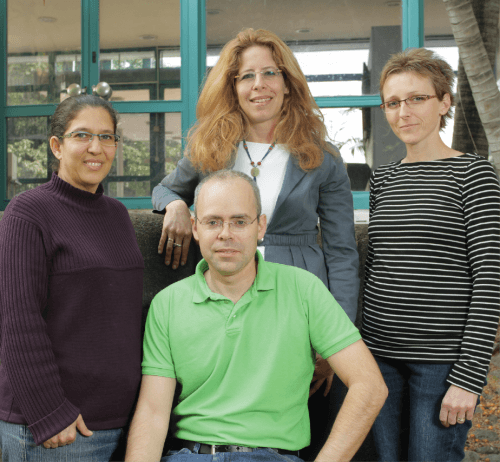Worn out or damaged proteins, or those that are no longer needed, are constantly broken down and reassembled in almost all the cells of our body. The machines that control this process include a large molecular aggregate, the signalosome, which consists of eight proteins. It releases the command that ultimately leads to the labeling of the protein by ubiquitin.

Anyone who has ever seen how paper or plastic bottles are prepared for recycling knows the heavy machinery that tramples these materials indiscriminately. On the other hand, the molecular machines that prepare the proteins for recycling in living cells are delicate and sophisticated, and as it turns out from a new study done at the Weizmann Institute of Science - also much more versatile than it would be common to think.
A team of the institute's scientists, led by Dr. Michal Sharon, discovered dynamic changes that occur in these machines when they mark proteins for recycling. A thorough understanding of the recycling process is essential, because errors in this mechanism contribute to the formation of many common diseases. In fact, the vitality of the recycling equipment for cellular life led in 2004 to the Nobel Prize in Chemistry being awarded to scientists who deciphered the role of ubiquitin, a small molecular marker that attaches to proteins destined for destruction by the recycling machinery.
Worn out or damaged proteins, or those that are no longer needed, are constantly broken down and reassembled in almost all the cells of our body. The machines that control this process include a large molecular aggregate, the signalosome, which consists of eight proteins. It releases the command that ultimately leads to the labeling of the protein by ubiquitin.
Until now, scientists thought that the structure of the signalosome was quite fixed, but the new study by the institute's scientists showed that in fact, this large cluster is extremely dynamic: each of its eight subunits can take different shapes. Furthermore, the units can be organized in different combinations. In addition, the entire cluster can migrate as needed to different parts of the cell.
The institute's scientists worked with human cells and used several technologies, including advanced mass spectroscopy, with the aim of finding out how the signalosome works during a crisis - when the cell's DNA is damaged by ultraviolet radiation. The scientists discovered that several changes take place in the signalosome. First, it moves from the cytoplasm to the cell nucleus, where the damage is done; The greater the damage, the greater the number of signalosomes moving to the nucleus. Furthermore, in the cell nucleus the subunits of the signalosome take on a different shape than those remaining in the cytoplasm. These findings show that the signalosome adapts itself to the changing needs of the cell.
The research, which was recently published in the scientific journal Molecular and Cellular Biology, was carried out by Dr. Sharon with Dr. Maria Piussi-Levi and Dr. Gili Ben-Nissen in the Department of Biological Chemistry, together with Dr. Elisabetta Bianchi from the Pasteur Institute in France. Dr. Hujiang Zhu, Dr. Michael Deary and Prof. Catherine Lilley from the University of Cambridge, and Dr. Yishai Levin from the Nancy and Steven Grand National Research Center for Personalized Medicine at the Weizmann Institute of Science.
The research may shed new light on the mechanisms involved in the repairs that take place in the cell following DNA damage. Mistakes in repairing the damage may lead to the formation of cancer. On a more basic level, the research may deepen the understanding of the molecular functioning of living beings in general, and of humans in particular. His findings suggest that it is possible that not only the signalosome, but also other large machines in the cell, are much more dynamic and versatile than commonly thought.
